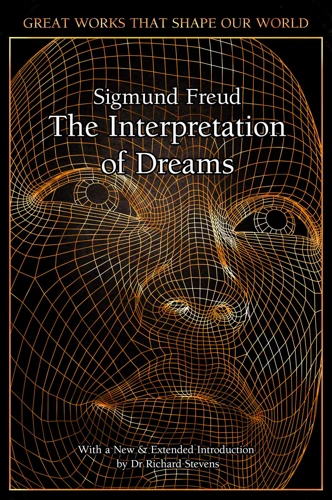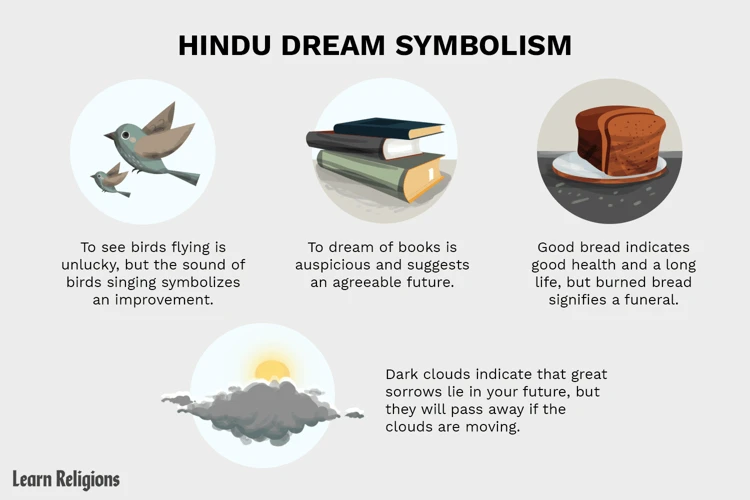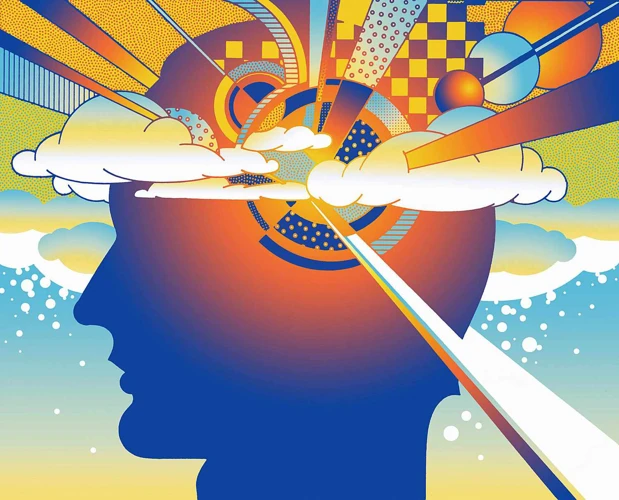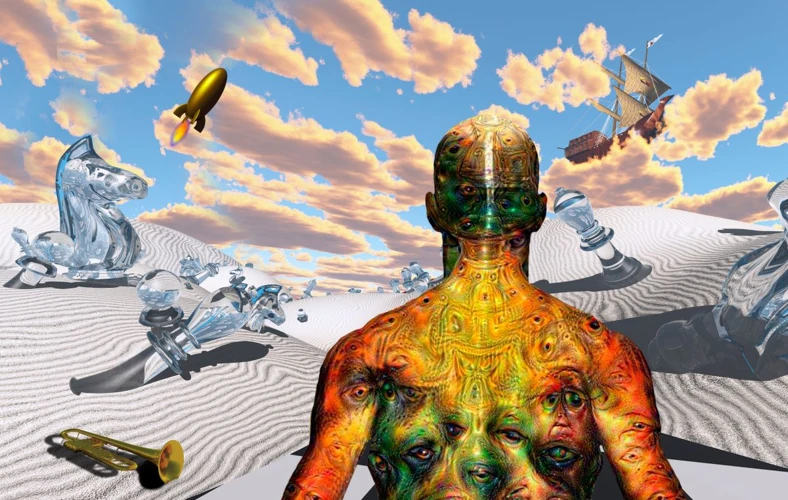As we drift off to sleep each night, our subconscious takes over and creates a world of its own through our dreams. It’s a world filled with vivid and often symbolic imagery – a world that can help us better understand our deepest emotions, desires, and fears. But have you ever wondered why certain symbols appear in your dreams, and what they might mean? As it turns out, the role of culture and personal experience can play a significant role in shaping dream symbolism. In this article, we’ll explore how culture and personal experiences can affect our dream imagery and provide some tips on how to interpret your own dreams with these influences in mind.
Contents
- The Importance of Cultural Context
- Dream Symbolism Across Cultures
- Personal Experience and Dream Symbolism
- Interpreting Your Own Dreams
- Conclusion
-
Frequently Asked Questions
- What is the significance of dream symbolism?
- Can dreams have universal meanings?
- Do different cultures have different interpretations of dream symbols?
- How does personal experience affect dream symbolism?
- What are some common dream symbols?
- Can dreams predict the future?
- Is dream interpretation a reliable tool for therapy?
- Do dream symbols have a one-size-fits-all meaning?
- Can practicing lucid dreaming improve dream interpretation?
- Should dream symbolism be taken literally?
- References
The Importance of Cultural Context

One of the most fascinating elements of dreaming is the unique symbolism that arises. However, this symbolism doesn’t exist in a vacuum. It’s shaped by an individual’s culture and personal experiences. This realization poses an intriguing question: how do our cultural and personal backgrounds influence what we dream about? Indeed, the role of cultural context in shaping dream symbolism is significant and worth exploring further. By examining how cultural factors influence our dreams, we can gain a better understanding of ourselves and the world around us.
How Culture Shapes Dream Symbolism
Dream symbolism is not only influenced by personal experience but also by cultural norms and beliefs. The symbols we see in our dreams are often tied to the cultural context in which we were raised. Research has shown that cultural background can impact the meaning and interpretation of dream symbols.
To understand how culture shapes dream symbolism, let’s take a look at the table below:
| Culture | Dream Symbol | Meaning |
|---|---|---|
| Western | Horse | Freedom or power |
| Eastern | Horse | Spiritual energy or death |
| African | Elephant | Wisdom or royalty |
| Native American | Raven | Trickster or messenger from the spirit world |
As we can see from the table, the same symbol can have different meanings in different cultures. For example, the horse is commonly associated with freedom and power in Western cultures, but in Eastern cultures, it can represent spiritual energy or even death. This illustrates how one’s cultural background can influence the interpretation of dream symbols.
Cultural beliefs and values also play a role in shaping dream symbolism. For example, in some cultures, the snake is seen as a symbol of temptation and evil, while in others, it is symbolic of healing and transformation. These cultural beliefs and values are often reflected in our dreams.
It is important to recognize the influence of culture on dream symbolism when interpreting our own dreams or the dreams of others. We cannot rely solely on our own personal experiences and interpretations but must also take into account the cultural background of the dreamer.
In the next section, we will explore common dream symbols and their meanings across cultures.
Recognizing the Influence of Personal Experience
When it comes to understanding dream symbolism, it’s important to recognize the significant role that personal experience plays in shaping our subconscious imagery. Our individual experiences, beliefs, and emotions can all have a profound impact on the symbols we encounter in our dreams. Here are some key points to consider when recognizing the influence of personal experience on dream imagery:
1. Prioritized Symbols: The symbols that appear in our dreams are often based on our individual priorities and values. Something that holds great importance to one person may not be significant to another. For example, a person with a passion for music may frequently dream about playing an instrument or attending a concert, whereas someone who has no interest in music may never encounter these symbols in their dreams.
2. Emotional Trauma: Experiences of emotional trauma can also heavily influence the types of symbols we envision in our dreams. Individuals who have experienced a traumatic event, such as a near-death experience or a significant loss, may frequently encounter recurring symbols associated with that event. These symbols may take on a highly personalized and nuanced meaning compared to someone who has not experienced trauma.
3. Personal Beliefs: Our personal beliefs, whether spiritual, political, or otherwise, can also shape the symbols we encounter in our dreams. For example, a person who identifies as a staunch feminist may frequently dream about encountering powerful, confident female figures. Someone who is highly religious may frequently dream about religious figures or scenarios related to their faith.
4. Behavioral Patterns: Our behavior patterns in daily life can also have an impact on our dream imagery. Individuals who tend to be highly regimented in their daily routines may have dreams that focus heavily on routine and repetition. Someone who engages in risky behavior may frequently dream about dangerous scenarios, such as falling from great heights or narrowly avoiding a serious accident.
Recognizing the influence of personal experience on dream symbolism is crucial for truly understanding the messages and meanings behind our dreams. By understanding the nuances behind our personal symbols, we can gain valuable insights into ourselves and our subconscious minds.
Dream Symbolism Across Cultures

As we delve into the world of dream symbolism, it becomes clear that understanding the cultural context is crucial. The symbolism within dreams can vary greatly depending on the cultural background of the dreamer. It is particularly interesting to examine how the interpretation of common symbols can differ across various cultures. While some symbols may have similar meanings across different cultures, there are also noticeable differences in how certain symbols are interpreted. This highlights the need to take cultural context into consideration when interpreting dreams. Let’s explore the fascinating world of dream symbolism across cultures.
Common Symbols and Meanings
Dream symbols are an essential part of understanding the messages from our unconscious mind, and some symbols have common meanings across cultures. Here are some common dream symbols and their potential interpretations:
- Water: Water is one of the most common symbols in dreams and is often associated with emotions. Calm water may represent peace, while rough waters may signify turmoil and uncertainty.
- Animals: Animals can represent different aspects of our personalities or behaviors. For example, a snake may represent fear or hidden emotions, while a dog may symbolize loyalty and friendship.
- Falling: Falling dreams are usually associated with feelings of anxiety or loss of control. They may also represent our fear of failure or the unknown.
- Death: Dreams about death do not necessarily mean the dreamer will die. Instead, they may indicate a need for change or transformation.
- Teeth: Dreaming about losing teeth can symbolize a fear of aging or losing power, while dreaming about strong, healthy teeth can represent confidence and self-esteem.
It’s important to note that the interpretation of dream symbols is not universal and can vary based on cultural backgrounds and personal experiences. However, understanding these common interpretations can be a helpful starting point for analyzing your own dreams.
Cultural Variations in Dream Interpretation
When it comes to interpreting dreams, there are cultural variations in the symbolism and meanings assigned to different images and scenarios. One such example of cultural variation involves the significance of animals in dream interpretation. In Western culture, the image of a black cat is often associated with bad luck, while in many other cultures, cats are viewed as symbols of protection and good fortune.
Another example can be seen in the symbolism of snakes. In some African cultures, snakes represent wisdom and healing, whereas in Western societies, snakes are often associated with danger and treachery.
Religious beliefs can also shape dream interpretation across cultures. For example, in Hinduism and Buddhism, images of cows may be viewed as sacred and representative of divine wisdom. However, in other cultures where beef is commonly consumed, cows may hold a more mundane symbolism.
Different cultural attitudes towards death and dying can also impact dream interpretation. In Western cultures, dreams of death or dying are often interpreted as representing actual physical death. In contrast, in many indigenous cultures, dreams of death may be viewed as a positive omen, symbolizing new beginnings or spiritual growth.
It is important to recognize that these cultural variations are not fixed or universal. The meanings of dreams and symbols can change over time and may even vary within the same culture. An individual’s personal experiences and background may influence their interpretation of a particular dream symbol, regardless of the cultural context. Ultimately, the meaning of a dream symbol will depend on the individual’s unique personal and cultural experiences.
Personal Experience and Dream Symbolism

Our personal experiences and emotions are deeply rooted in our subconscious mind, impacting our thoughts and behavior. When we dream, our subconscious manifests as a series of symbols and images, often reflecting our past traumas, deepest desires, and fears. Dream symbolism can be a complex and subjective phenomenon, highly influenced by our cultural background and individual experiences. Understanding the role of personal experience in shaping dream imagery can provide invaluable insights into one’s psyche and promote personal growth. In this section, we will delve deeper into the intricate relationship between our past experiences and the symbolic universe of our dreams.
The Role of Past Trauma and Emotional Experiences
Our past experiences and traumas play a significant role in shaping our dream symbolism. Emotions strongly influence dream imagery and often, repressed feelings and traumatic memories can manifest in the form of nightmares or disturbing dream content. Here are some ways in which past trauma and emotional experiences can affect our dreams:
- Recurring dreams: Traumatic experiences can trigger recurring dreams, where the same theme or event is repeated over and over again. This may be a reflection of a deep-seated fear or anxiety that needs to be addressed.
- Symbols of trauma: Traumatic events may appear in dreams as familiar images or symbols, such as falling, being chased, or drowning. These may be metaphors for the trauma itself, and can provide insight into how the individual is processing their emotions surrounding the event.
- Emotional processing: Dreaming can offer a safe space to process intense emotions and come to terms with traumatic events. Dreams can provide a release for emotions that have been repressed, which can be helpful in the healing process.
It’s important to note that dreams do not necessarily provide a clear answer or solution to past trauma or emotional experiences, but they can offer a starting point for reflection and healing. Seeking support from a therapist or mental health professional is also an important step in addressing past traumas and their effects on dream symbolism.
Influence of Daily Life on Dream Imagery
Our daily experiences and activities can have a significant influence on the imagery we experience in our dreams. Whether it’s the people we interact with, the things we see, or the emotions we feel, these experiences can all leave an imprint on our dreams and shape the symbolism we encounter. Here are some ways that daily life can affect dream imagery:
- Physical Environment: The places we spend our time in can often make an appearance in our dreams, whether it’s a workplace, a childhood home, or a public space. These locations can represent a sense of security or familiarity, or they may reflect feelings of stress or discomfort.
- Interpersonal Relationships: Our interactions with others can also play a role in dream imagery. People we know and care about may appear in our dreams as symbols of connection and support, while those we have conflict with may manifest as figures of tension and anxiety.
- Emotional States: Our emotional experiences throughout the day can affect the tone of our dreams and the images that appear. For example, a stressful day may lead to dreams of chaos and confusion, while a peaceful day may result in tranquil and serene dreamscapes.
- Media and Entertainment: The media we consume, such as news or movies, can also make an impact on dream imagery. Characters and storylines may be incorporated into dreams as a way of processing the information our brains have received.
It’s important to remember that not all dream imagery will be influenced by our daily experiences, but the ones that are can provide valuable insights into our emotional state and subconscious processing. By paying attention to the specific symbols and themes that appear in our dreams, we can better understand the impact of daily life on our psyche and use this knowledge to promote self-awareness and personal growth.
Interpreting Your Own Dreams
As we delve deeper into the world of dream symbolism, we may find ourselves wondering what our own dreams mean. Dream interpretation can be a complex and intriguing process that requires careful consideration of both cultural context and personal experience. It can be easy to become overwhelmed by the multitude of symbols and meanings that can manifest in our dreams. However, with a bit of focused effort, we can learn to interpret our own dreams and use them as a tool for self-discovery. Let’s explore some tips for interpreting your own dreams while keeping cultural and personal influences in mind.
Keeping Cultural and Personal Influences in Mind
When interpreting dreams, it’s important to keep in mind the cultural and personal influences that can shape dream symbolism. Here are some tips for staying mindful of these factors:
1. Learn about the cultural significance of common symbols. As we discussed earlier, certain symbols may have different meanings in different cultural contexts. Researching the cultural significance of symbols can help you gain a more nuanced understanding of your own dreams.
2. Reflect on your own cultural background. Consider how your own cultural background may be influencing your dreams. Are there certain symbols or themes that appear frequently in your dreams that may be tied to your cultural heritage? Reflecting on your own experiences can help you gain new insights into the meaning behind your dreams.
3. Consider your personal experiences and emotions. As we discussed earlier, personal experiences and emotions can also shape dream imagery. When interpreting your dreams, consider whether there may be a connection between the events or emotions of your waking life and the symbols that appear in your dreams.
4. Stay attuned to your own intuition. Ultimately, no one knows your dreams better than you do. While it’s important to keep cultural and personal influences in mind, it’s also important to trust your own instincts when interpreting your dreams. Don’t be afraid to dig deep and explore the unique meanings behind your dream symbols.
By keeping cultural and personal influences in mind, you can gain a deeper understanding of the complex world of dream symbolism. Remember to approach dream interpretation with an open mind and a willingness to learn, and you may discover new insights about yourself and your place in the world.
Utilizing Symbols as a Tool for Self-Discovery
When it comes to interpreting our own dreams, one valuable tool is using symbols as a means of self-discovery. As discussed previously, dream symbolism is heavily influenced by cultural and personal experiences. By exploring the meanings behind these symbols, we can gain a greater understanding of ourselves and our subconscious thoughts and emotions.
Here are some tips for utilizing symbols as a tool for self-discovery:
- Keep a dream journal: By recording our dreams and noting any recurring symbols, we can begin to identify patterns and themes that may provide insight into our waking lives.
- Identify personal associations: While some symbols may have universally recognized meanings, it is important to also consider personal associations. For example, a spider may be a common symbol of fear or anxiety, but it may also hold a unique significance for someone who had a traumatic experience involving spiders.
- Consider multiple meanings: A single symbol may have a variety of meanings, depending on the context and individual interpretations. For example, water may represent cleansing and renewal, but it could also symbolize overwhelming emotions or the unknown.
- Reflect on emotions: In addition to understanding the literal meaning behind a symbol, it is important to also consider the emotions and feelings that arise when thinking about it. These emotions may provide further insight into our subconscious mind.
- Seek guidance: If interpreting your dreams and the symbolism within them feels overwhelming, seek guidance from a therapist or other trained professional. They can provide a different perspective and help guide you through the process of self-discovery.
By utilizing symbols as a tool for self-discovery, we can gain a deeper understanding of our subconscious thoughts and emotions. This understanding can lead to personal growth and a greater sense of self-awareness.
Conclusion
As we have explored in this article, the symbolism in dreams is heavily influenced by both cultural context and personal experience. It is important to recognize that there are common symbols and meanings across cultures, but also significant variations in interpretation based on cultural background. Similarly, personal experiences and traumas can greatly affect the themes and symbolism present in our dreams.
When interpreting our own dreams, it is crucial to keep these influences in mind and approach dream analysis with an open mind. Symbols can be a powerful tool for self-discovery and understanding our subconscious thoughts and emotions.
It is worth noting that while dream analysis can be a useful tool for self-reflection, it should not be used as a replacement for professional mental health treatment. If you are struggling with mental health issues or traumatic experiences, it is always a good idea to seek the help of a qualified therapist.
Overall, understanding the role of culture and personal experience in shaping dream symbolism can provide a deeper understanding of ourselves and our place in the world. By exploring the imagery of our dreams, we can unlock new insights and gain a more profound understanding of our thoughts and emotions.
Frequently Asked Questions
What is the significance of dream symbolism?
Dream symbolism can provide insight into our unconscious thoughts and emotions, as well as offer guidance for personal growth and problem-solving.
Can dreams have universal meanings?
While some symbols may have universal meaning, the interpretation of dreams is largely influenced by cultural context and personal experience.
Do different cultures have different interpretations of dream symbols?
Yes, cultural context can significantly impact the interpretation of dream symbols. For example, a snake may represent fear or danger in one culture and wisdom or healing in another.
How does personal experience affect dream symbolism?
Personal experiences, particularly past trauma and emotional experiences, can greatly influence the symbolism within dreams.
What are some common dream symbols?
Some common dream symbols include flying, falling, teeth, and water. However, the interpretation of these symbols can vary depending on cultural and personal context.
Can dreams predict the future?
While some people believe that dreams can offer hints or warnings about the future, there is no scientific evidence to support this claim.
Is dream interpretation a reliable tool for therapy?
Dream interpretation can be a valuable tool for therapy, but should always be used in conjunction with other therapeutic approaches.
Do dream symbols have a one-size-fits-all meaning?
No, the interpretation of dream symbols can vary based on cultural context and personal experience.
Can practicing lucid dreaming improve dream interpretation?
Practicing lucid dreaming can offer greater control and awareness within dreams, which may make interpretation easier. However, it is not necessary for successful dream interpretation.
Should dream symbolism be taken literally?
Dream symbolism should not be taken completely literally, as the interpretation of symbols is largely influenced by cultural and personal context.







